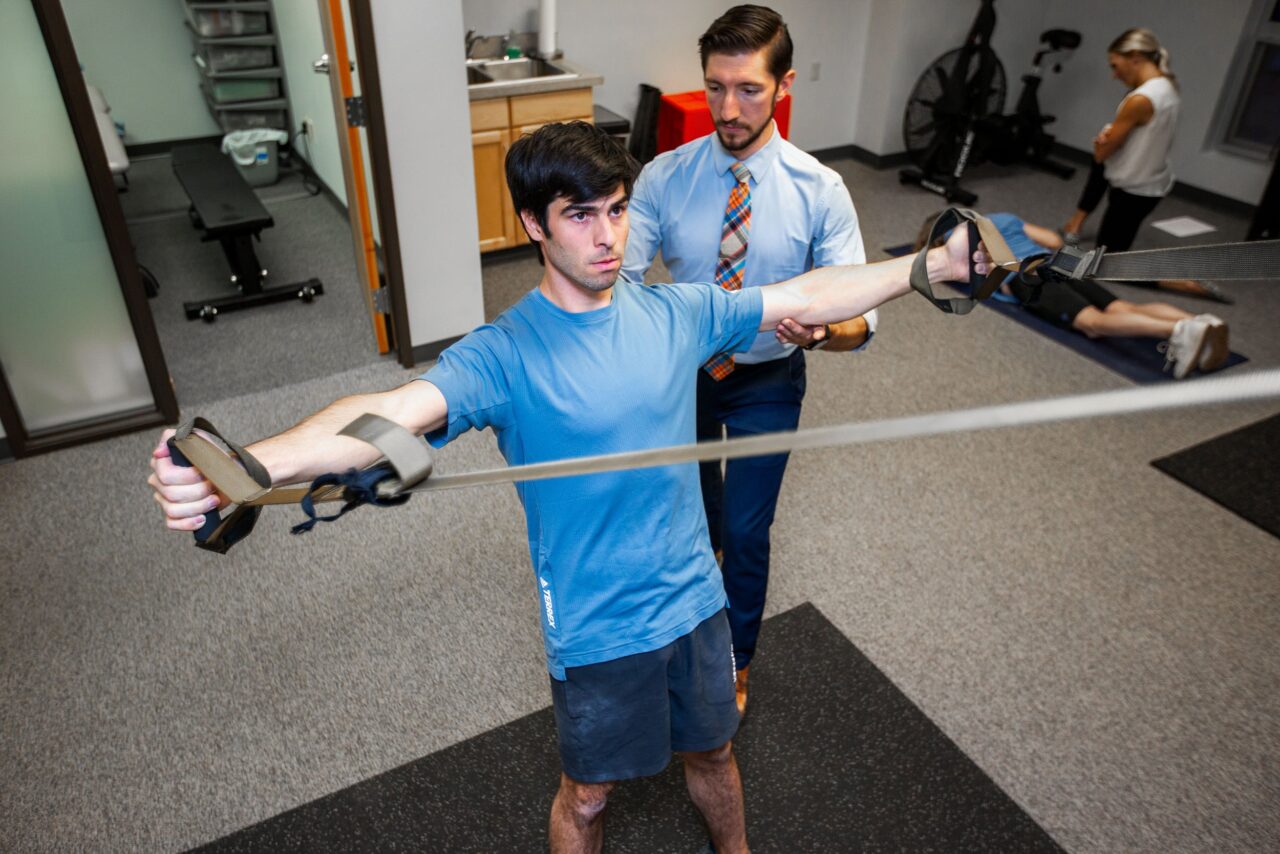The trapezius is a large muscle that extends from the base of the skull, down to the T12 vertebra, and out to the scapula and clavicle. This muscle plays a crucial role in performance and injury prevention for rock climbers. Its function is to stabilize the scapula during shoulder movements such as the pull up, gaston, undercling, lock-off, and mantle. The trapezius is a unique muscle in that it has multiple portions that contribute to different movements of the scapula. The upper trapezius elevates, retracts, and upwardly rotates the scapula. The middle trapezius retracts the scapula. And the lower trapezius retracts, depresses, and upwardly rotates the scapula. All of these movements are crucial during rock climbing. Poor function or imbalance of the trapezius is a frequent cause of common shoulder injuries and pain such as impingement, biceps tendinopathy (tendinitis), and rotator cuff tears and tendon injuries.
It is common for the upper trapezius to become tight and painful in response to climbing. Although this can be caused by a variety of reasons, one of the most common causes we see in the clinic at Mend physical therapy is an imbalance of the upper and lower trapezius. The upper trap is often over-utilized and the lower trap is often under-utilized during climbing movements, especially during challenging, powerful moves.
To restore proper balance it can be beneficial to perform strengthening exercises for the lower trapezius. But this can be tricky if your upper traps are already over-active. Luckily, researchers have tested and discovered the best exercises to maximize activation of the lower trapezius while minimizing activation of the upper trapezius.
Mend Clinical Recommendation: if you are struggling with pain and tightness to your upper traps, perform the exercises in the video below. Start with 3 sets of 12 reps for each exercise and perform them before a climbing session to activate the lower trapezius so you can feel it while you’re climbing.
Mend Climbing Tip: keep your shoulder blades pulled slightly down and together on your back while climbing, especially on difficult moves. If you’re unable to maintain this position while climbing, practice on easier routes or boulders until you’re more successful keeping the shoulder position.
Other treatments that are beneficial for the upper trapezius are manual therapy such as joint mobilization or manipulation to the thoracic spine and dry needling to the upper trapezius. If you’re continuing to be limited by pain and tightness to your upper traps schedule a free consultation with the rock climbing specialists at Mend in Boulder and Louisville, Colorado to help determine the underlying cause of your dysfunction.
4 best exercises to strengthen lower trapezius WITHOUT activating upper trapezius:
1. Prone Shoulder Extension with Shoulder External Rotation (also known as “shoulder I’s”)
2. Prone Horizontal Abduction with Shoulder External Rotation (also known as “shoulder T’s”)
3. Sidelying Shoulder External Rotation
4. Sidelying Shoulder Flexion

